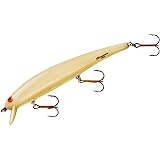The captivating video above introduces viewers to a powerful, albeit controversial, method of catching fish: electric fishing. This technique, often employed for its remarkable efficiency, fundamentally alters traditional approaches to harvesting aquatic life. While the immediate visual impact of fish rising to the surface is striking, a deeper understanding of electrofishing reveals its intricate mechanics, diverse applications, and significant implications.
Traditional fishing methods frequently face challenges regarding efficiency and environmental impact, often requiring extensive time and resources for limited yields. Consequently, methods like electrofishing have been developed to enhance collection speed and volume. This specialized approach, however, necessitates a careful examination of its scientific underpinnings, ethical considerations, and broader role within fisheries management and research.
Understanding the Mechanics of Electrofishing
Electrofishing relies on the principle of generating an electric field within a body of water, which temporarily affects fish physiology. Specialized probes are submerged, releasing controlled electrical pulses that interact with the water’s conductivity. The intensity and type of current significantly determine the field’s effectiveness and its impact on aquatic organisms.
Upon exposure to this electric field, fish experience involuntary muscle contractions, a phenomenon known as galvanotaxis. This reflex causes them to swim uncontrollably towards the anode, or positively charged electrode. Subsequently, as the fish draw closer or are exposed to higher current densities, they become temporarily stunned or disoriented, rising passively to the water’s surface where collection is simplified.
The Science Behind Fish Stun Technology
The physiological response of fish to electric current is a complex interplay of nerve stimulation and muscle contraction. Direct current (DC) and pulsed direct current (PDC) are predominantly utilized in electrofishing, as they induce galvanotaxis more effectively than alternating current (AC). Research indicates that properly configured PDC minimizes harm while maximizing fish capture efficiency, a crucial balance in scientific applications.
Factors such as water temperature, dissolved solids, and the specific resistance of the fish itself influence the current required to achieve the desired stunning effect. For instance, fish in warmer, more conductive water generally require less intense electrical fields. Experts must carefully adjust settings to ensure fish are merely stunned, not permanently injured, a task that demands considerable expertise and precision during operations.
Diverse Applications Beyond Commercial Harvesting
While the video showcases electric fishing in a commercial context, its primary and most widespread application is found within scientific research and fisheries management. The technique offers unparalleled advantages for non-lethal fish sampling, providing crucial data for conservation and ecological studies. Its versatility allows for various objectives, from assessing population health to managing invasive species populations effectively.
Scientific Research and Population Assessment
For aquatic ecologists and fisheries biologists, electrofishing is an indispensable tool for conducting population surveys. Studies have shown that this method can achieve a 30% to 50% greater sampling efficiency compared to traditional netting in certain habitats, particularly for assessing fish diversity and abundance. Data regarding species distribution, age structure, and health can be collected without permanent harm to the fish, which are subsequently released.
Furthermore, electrofishing assists in tagging programs, where fish are temporarily stunned, marked, and then returned to their environment. This process enables researchers to track migration patterns, growth rates, and survival statistics over extended periods. The ability to quickly and safely handle individual fish for measurements and samples represents a significant advancement in aquatic science.
Fisheries Management and Conservation Efforts
Electrofishing plays a vital role in active fisheries management strategies. For example, it is frequently employed in efforts to remove invasive species from sensitive ecosystems, preventing them from outcompeting native populations. Conversely, native fish populations can be safely relocated from threatened areas, such as those undergoing drought or construction, ensuring their survival and genetic continuity.
Conservation programs also utilize electrofishing for monitoring the success of habitat restoration projects by assessing changes in fish community structures. In cases of accidental spills or pollution events, rapid fish rescue operations are often facilitated by electrofishing, minimizing ecological damage. Such targeted applications highlight the technique’s utility as a strategic conservation tool when responsibly implemented.
The Efficiency and Ethical Considerations of Electric Fishing
The efficiency described in the video is a significant advantage, particularly when large numbers of fish must be processed quickly. A well-executed electrofishing operation can collect as many fish in a few hours as traditional methods might gather over several days. This rapid sampling capability is critical for time-sensitive research and management objectives, allowing comprehensive data collection across broader areas.
Moreover, when performed correctly, electrofishing can be highly selective, allowing operators to target specific size classes or species by adjusting current parameters. This precision often results in less habitat disruption compared to drag nets or trawl fishing, which can significantly alter the seabed. The non-lethal potential also positions it as a more humane alternative for certain research applications.
Potential Drawbacks and Environmental Impact
Despite its advantages, electrofishing is not without its controversies and potential risks. If not operated by trained professionals, improper settings or prolonged exposure can lead to significant stress, spinal injuries, or even delayed mortality in fish. Research indicates that factors like pulse frequency and duration directly correlate with the risk of internal damage, particularly in larger fish species.
Furthermore, non-target organisms, including amphibians, invertebrates, and even young fish, may also be affected by the electric field, leading to unintended ecological consequences. The ethical debate centers on ensuring that the benefits of data collection or harvesting genuinely outweigh the potential harm to aquatic life and the broader ecosystem. Strict adherence to established protocols is therefore paramount.
Regulatory Frameworks and Best Practices
Given the power and potential risks associated with electric fishing, its use is typically subject to stringent regulatory oversight and requires specialized permits. Various governmental and environmental agencies establish guidelines for the voltage, amperage, and duration of electrical pulses. These regulations are designed to minimize adverse effects on fish populations and ensure operator safety during field operations.
Best practices for electrofishing include comprehensive operator training, which encompasses understanding electrical safety, fish biology, and species-specific responses to current. Operators are taught to utilize the lowest effective voltage and current necessary to stun fish, minimizing exposure time to prevent injury. Additionally, avoiding sensitive areas like spawning grounds or nurseries is considered a critical component of responsible electrofishing. By adhering to these strict guidelines, the technique can function as a valuable tool within its intended applications.








